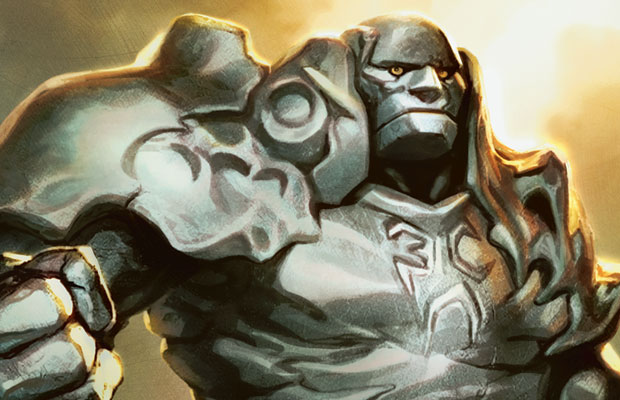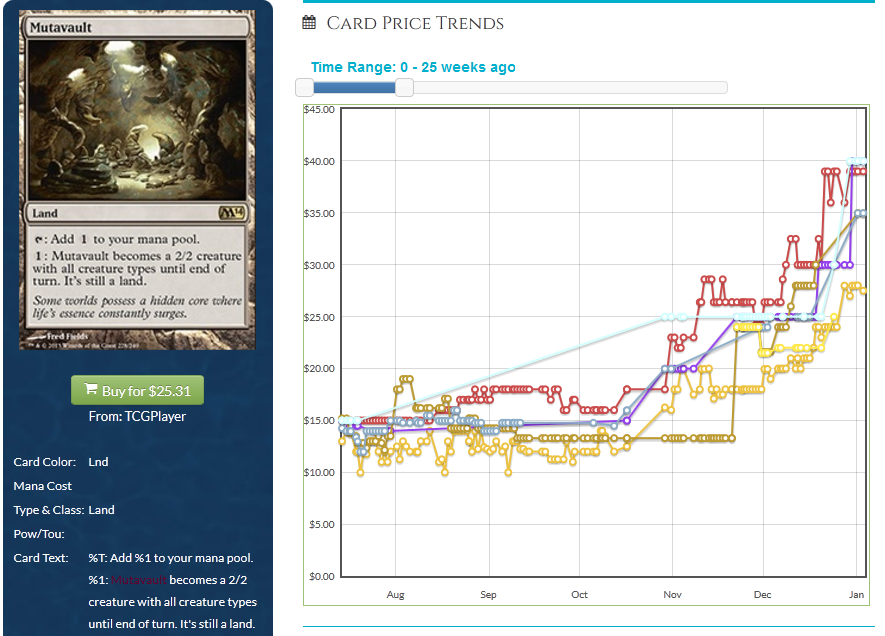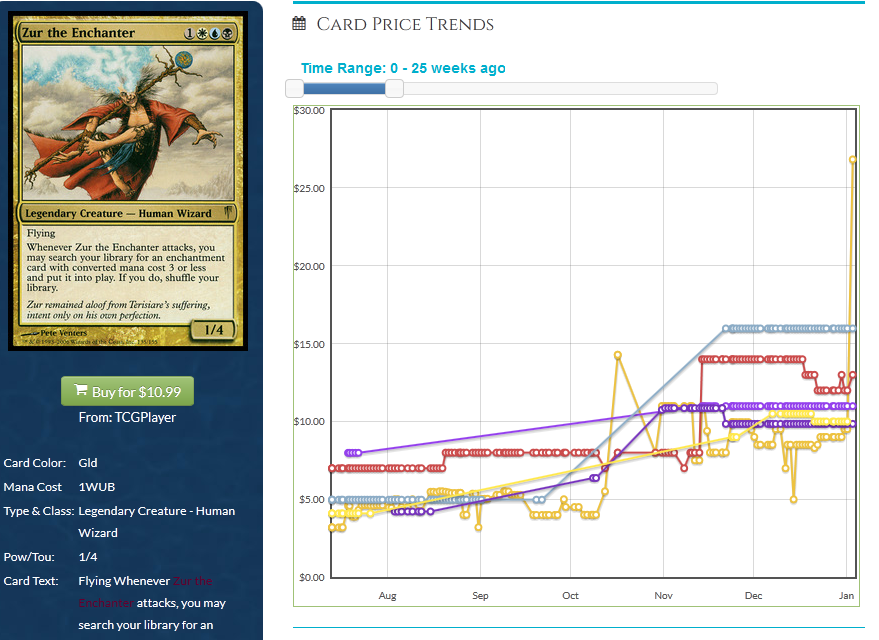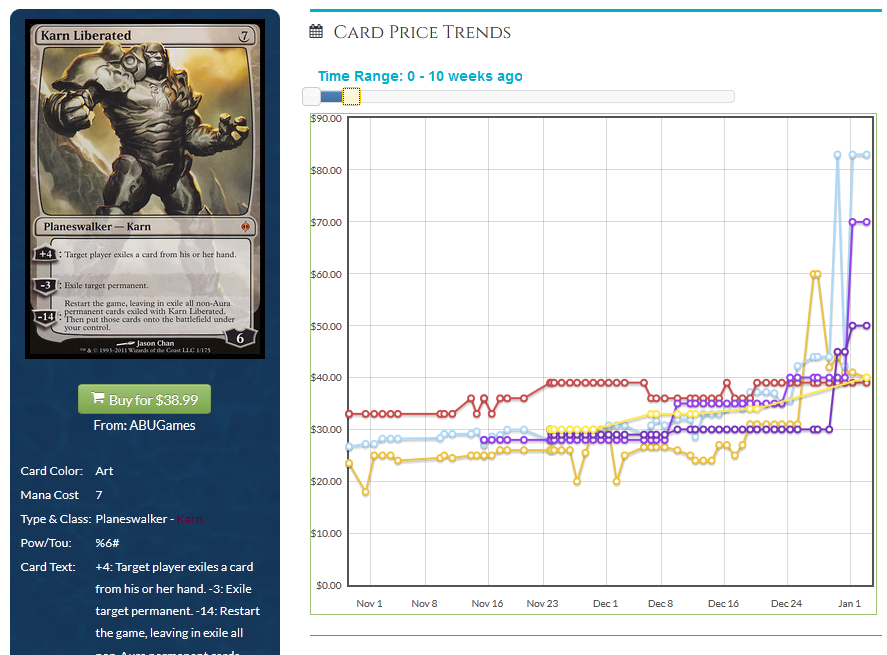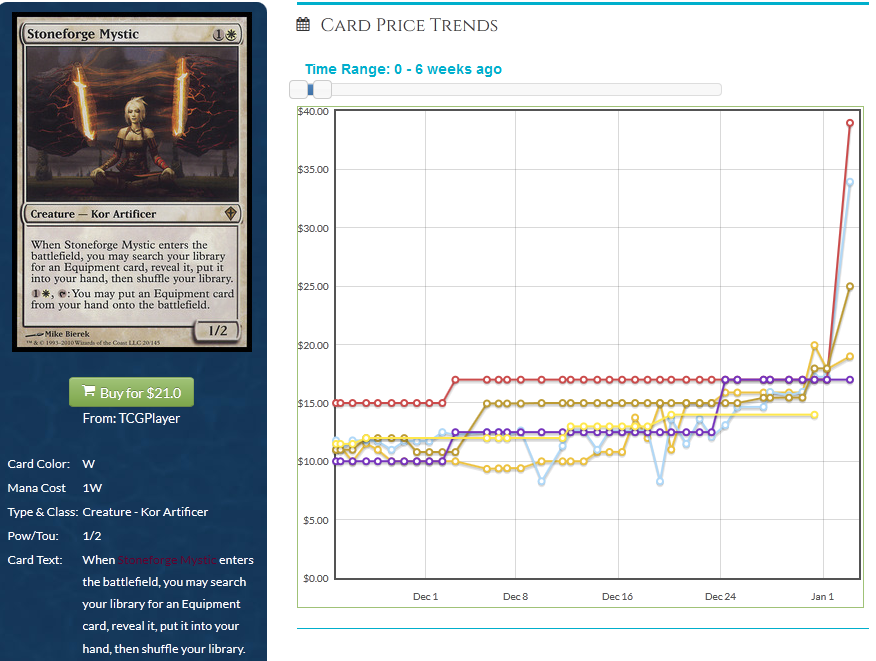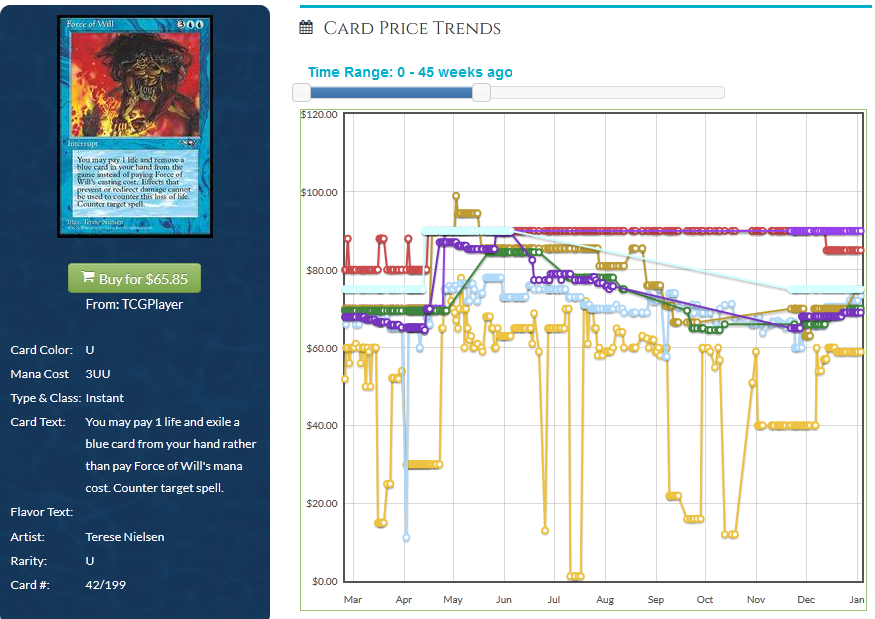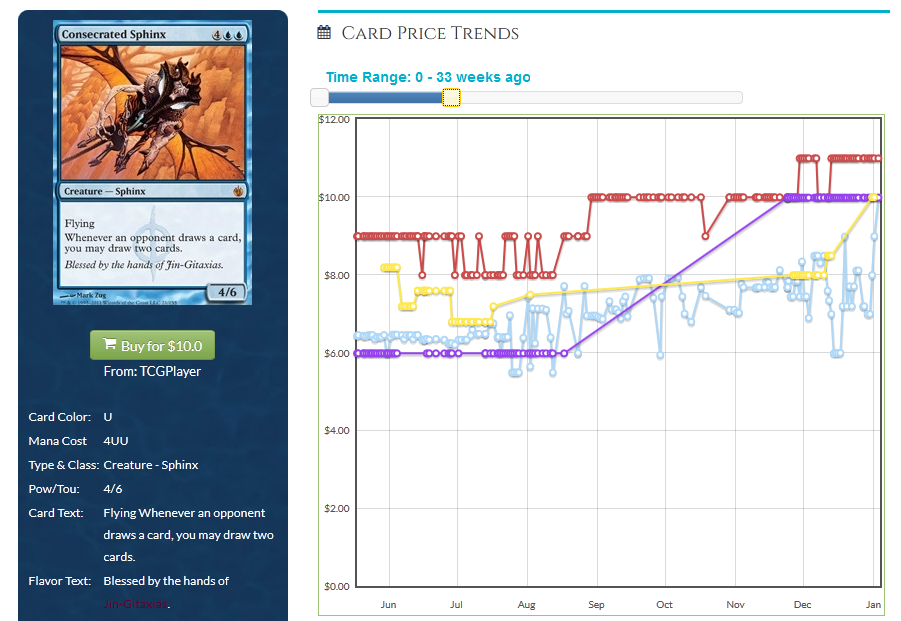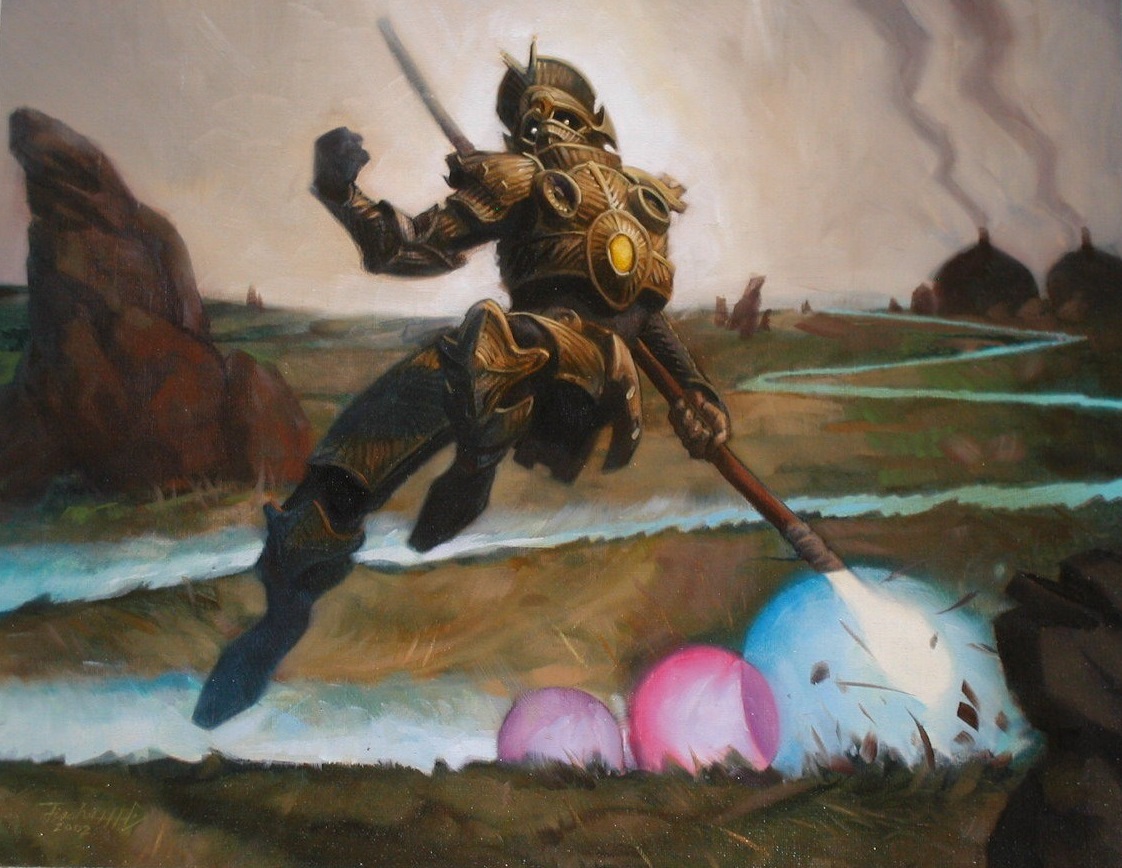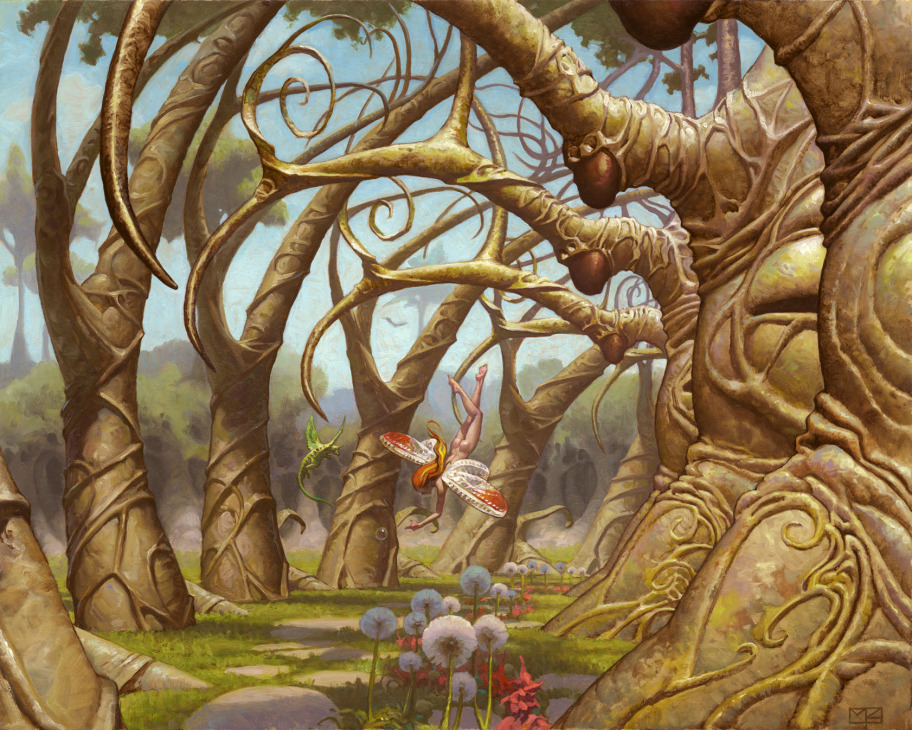Instead of focusing my article on one topic this week, I am going to focus on recent announcements from Wizards and what that means for all of us.
M15 Preliminary News
There were some interesting revelations released about the upcoming M15 core set. The biggest piece of news from this announcement was that they were adding 20 extra cards to the set. This was discovered by taking the card count that Wizards provides with a set announcement (for M15 this was 269) and comparing it to M14’s 249 total cards.
Before Mark Rosewater explained that the 20 extra cards were going to be uncommons, wild theories were being thrown around like candy. For example, that Wizards was finally making room for Zendikar fetchlands or some other such nonsense. Now that the outlandish theories can be put to rest, lets discuss the impact that 20 new uncommons will have on the set and for Standard in general.
This is a great idea for from a limited perspective because it will allow them to print more powerful cards at the uncommon level. A major comparison was made with the M14 rare Domestication, which was previously an uncommon in Rise of the Eldrazi, and then was upgraded to rare in M14 so that it would not kill limited. If Domestication is reprinted again in M15 I would be 99% sure it would be an uncommon due to this announcement.
From a financial perspective this could allow for certain uncommons in M15 to spike higher than usual if they are played heavily in a future Standard archetype. It would not surprise me to see $5 uncommons that reach the popularity of Young Pyromancer, Burning-Tree Emissary, or Boros Charm once M15 becomes scarce. Keep this mind when drafting or trading – getting a few chase M15 uncommons as a throw in could be a good strategy in the future.
Some are other tidbits were that the Magic card face was being redesigned and that Garruk is making a reappearance in M15. I don’t think the card face change is going to do anything negative for the game – as the saying goes, even if you put $100 bills in Magic packs players will complain about the way you folded them. Garruk reappearing is interesting though because many players noticed that the artwork depicted that he was still veil cursed – which lead to theories about a Garruk Relentless reprint. While nothing is out of the realm of possibility, I doubt that this will happen unless double faced cards start popping up in spoilers for M15. Double faced cards need a special type of print run in order to produce them in a cost efficient manner so unless there are double faced cards being spoiled in the future at all rarity levels you can count out a Garruk Relentless reprint.
Coming Up – Born of the Gods
Since BNG is on the horizon and spoiler season will soon be starting, let’s revisit my article about picking up multicolored cards for missing temples to see if anything is still relevant based on the spoiled U/W, G/W, and B/R temples:
U/W – I did not predict that this temple would make any existing cards more powerful and instead would reinforce existing U/W control archetypes and make Esper more viable. Cards in these colors have already spiked or reached their peaks – though there is always chance for the double spike before the season is over. Unfortunately capitalizing on a second spike would be very difficult, as many players will not buy into a card at such a high price that also has such a short life.
G/W – I’ve been a fan of Advent of the Wurm for a long time and the G/W temple could make it finally take off. I would definitely hold on to any copies of Advent you picked up in the previous months to see if the G/W temple can make it take off. Fleecemane Lion has taken a nosedive in price as I predicted, and can be had for as cheap as $2 from several vendors. I think this is the floor for Watchwolf+ because it still has a lot of casual appeal in addition to potentially being relevant in Standard over the next year. Loxodon Smiter is already being played pretty extensively so I don’t think the G/W temple will boost the price much. Any gains it might see would be marginal compared to the current price. I don’t think Armada Wurm is going anywhere; it is too pricy for Standard, though Trostani could definitely spike if a Populate deck is established during Standard season. In summary, watch Advent of the Wurm and Trostani the closest for price spikes.
B/R – Exava is dirt cheap right now and the right deck could really make her take off. I don’t foresee her going over $4 due to the intro pack inclusion. This is still a juicy pay off if you can hold your copies. Rakdos’s Return is already $5, but it could go up before the end of the season. Tymaret and Underworld Cerberus are very cheap for a rare and mythic respectively, but they’ll need additional help from BNG to be relevant in Standard. All in all, watch these B/R cards over the next few weeks.
Modern Announcement – Event Deck
Last week I discussed some trending cards in Modern and little did I know that Wizards was planning on releasing a Modern event deck! For $75 this certainly ain’t cheap, which means pricey format staples are being reprinted. Which staples remains to be seen yet there has been a lot of speculation as to what these might be based on the revelation that there will be double sided tokens included with the Modern event deck.
One popular theory is that it could be Mono Blue Tron. This makes sense because we could see Wurmcoil Engine tokens, and also gives Wizards a way to release more copies of Remand into the market. At the same time, they can also reprint staples like Karn that have been getting outrageously expensive since Modern has become more popular. Other potential reprints for Mono Blue Tron include Spellskite, Oblivion Stone, All is Dust, and Eye of Ugin which have been steadily going up in price over the years. Unfortunately Mono Blue and other Tron decks do not usually run fetch lands which are a sorely needed reprint in the format.
This leads into another major theory, which is that it is a B/W tokens list. This would allow Wizards to reprint Marsh Flats and/or Arid Mesa along with cards like Auriok Champion, Hero of Bladehold, Thoughtseize, Inquisition of Kozliek, and Windbrisk Heights. You can read more about the community’s speculation at http://www.reddit.com/r/magicTCG/comments/1urx5j/wizards_announces_modern_event_deck.
Again, let me reiterate that this is all pure speculation at this time. I wanted to highlight this information to make a point, which is that Modern speculation targets should never be held for the long term (1 year or more). With this announcement, and in addition to last year’s Modern Masters, Wizards has made it clear they have no qualms with offering regular reprints of Modern staples. Not to put the reprint fear into you, but plan your Modern acquisitions accordingly and realize that there is a time limit when holding a Modern card.
Counterfeits and the Community’s Reaction
After being discovered by others at the Quiet Speculation and Twitter communities, a post surfaced on Reddit describing a company in China that is making near-perfect counterfeit Magic cards (http://www.reddit.com/r/magicTCG/comments/1uoccf/beware_very_accurate_fake_cards_from_china_and/). If you check out the album of samples that the company offers you can see that they have the technology to reprint not only just Standard or Modern staples, they also can make Legacy staples like dual lands, Onslaught Fetchlands, Wasteland, and Force of Will. Personally, I haven’t seen the fakes myself to verify how accurate they are. Regardless, they offer a startling insight into the power of printers today and the efforts that someone will take to make a quick buck off of Magic copyright infringement.
A lot of people on Reddit were concerned that once the technology was perfected there would be no easy way to tell the difference between a real and fake, and thus these counterfeits would crash the secondary market for Magic singles. While I agree that this is a concern, I believe that ultimately these counterfeit cards will be of little consequence to the game at large.
-
The barrier of entry for counterfeiting Magic cards that are facsimiles of the real versions is very costly. There are several methods used already to create counterfeit cards (P9 counterfeits have always been an issue in the market). To make a good one takes a lot of trial and error, as I’m sure we’ve all seen some pretty comical fakes in our time. The printing equipment and distribution of cards are costly (though I admit, these business processes could decrease in cost over time as technology gets better,) which is evident because the vendor requires a minimum order of about $500. Only dedicated scammers will be able to purchase fakes en masse, which means that once the scammer is found out the community can be alerted to them and shut them down by having law enforcement intervene.
-
Even if counterfeits become a huge problem online, buyers will just rely more on big name stores like Starcity, Channelfireball, etc. to purchase their cards because they will be a reputable source. Lucky for Magic, collectability of the cards usually comes in second to players wanting and needing them for formats like Standard.
-
It won’t affect the sales of Magic cards at brick and mortar establishments because store owners are typically experienced at distinguishing between a fake and real card because they have seen hundreds of thousands of Magic cards over their lifetime. Buying directly from stores shouldn’t be an issue either.
-
Even the more experienced players will be able to tell the difference because there will always be little signs that indicate that the card is fake, since the printing process is so hard to replicate exactly.
-
Wizards is working on changing the way cards are designed to help counter the fakes entering the market (one reason I suspect the card frame change in M15)
Of course, there are concerns especially for older formats like Legacy and Vintage. If a card is double sleeved and sitting across from you at a table would you be able to tell it is a fake? I would elaborate a bit more on this concern, but I feel user whatmakesyouhappy at Reddit did a good job explaining this in the mtgfinance subreddit (http://www.reddit.com/r/mtgfinance/comments/1uv7ng/analysis_of_potential_impact_of_chinese/).
To summarize their analysis, the main concern is Modern, which is on the cusp of becoming eternal and still has crazy prices on more recently printed cards like Tarmogoyf and Dark Confidant. Again, like I discussed in my Modern section above, Wizards is all about the reprint in Modern – they can stay ahead of the counterfeits by making sure they have regular reprints which the Modern event deck all but ensures. The other formats are less affected because Standard needs must be fulfilled immediately (can’t wait 2 weeks for a card from overseas) while Legacy is more established (most players have the cards) and Vintage has always had proxies.
The counterfeits will exist, they have always existed, and Wizards and the community will ride this wave of counterfeits like every other wave before it. The security of purchasing from reputable sources, along with the effort to make high-demand cards available will help alleviate the impact of counterfeits on the market.
Wrap Up
That wraps up my introspection of last week’s news and my analysis on what it all means. I will leave you with some cards that I’ve noticed have been trending upward on the MTGPrice 50 Biggest Gainers page:
Kami of the Crescent Moon – Another Nekusar related spike? Yawn. At least this one may have Modern applications.
Reflecting Pool – Appearing across a smattering of Modern decks, Reflecting Pool has slowly been ticking up in price over the past week. Will this be the next land to break $20? Probably not, as Jund prefers not to play the land and Pool is mainly played in Tier 2 three-color-or-more builds. I don’t believe this card has enough of a profit potential to start grabbing copies.
Omnath, Locus of Mana – Did not expect this guy to appear near the top of the list. Apparently he can occasionally be found for $5 from several vendors on TCGPlayer. A popular EDH general, his demand is driven by the casual market. Expect Omanth to continue his steady rise into the future.
Damnation – I sort of saw this coming, though did not expect that it would break $30 and keep going. I guess Grixis and gifts control in Modern are becoming more popular, in addition to the casual appeal of the card. However, unless you need these for a deck, I would recommend staying away because the reprint potential here is quite high. (They did reprint Wrath of God in the latest Commander precons). The price really can’t go much higher so the potential for profits are slim at this point.
Tectonic Edge – Another expected rise. What could be the final price on Tec Edge? I think it might hit the highs of Inquisition of Kozilek , which is around $6-$7. The buy-in price is currently pretty high at $3, yet a rise to $6 is not out of the question come Modern season. Pick up your Tec Edges now before they get loony.
